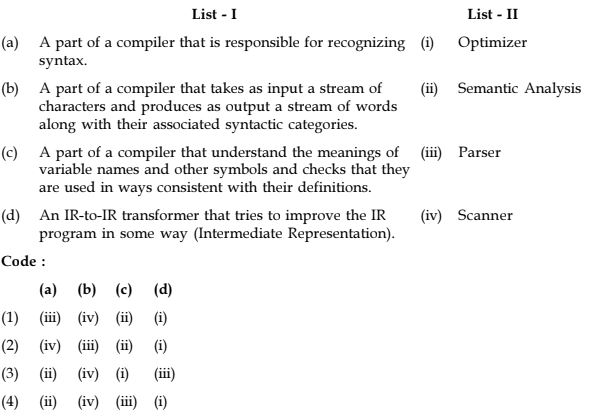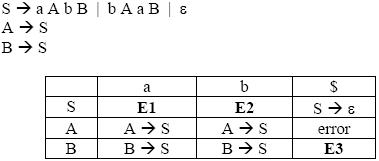Welcome to the Compiler Design MCQs Page
Dive deep into the fascinating world of Compiler Design with our comprehensive set of Multiple-Choice Questions (MCQs). This page is dedicated to exploring the fundamental concepts and intricacies of Compiler Design, a crucial aspect of GATE CSE Exam. In this section, you will encounter a diverse range of MCQs that cover various aspects of Compiler Design, from the basic principles to advanced topics. Each question is thoughtfully crafted to challenge your knowledge and deepen your understanding of this critical subcategory within GATE CSE Exam.
Check out the MCQs below to embark on an enriching journey through Compiler Design. Test your knowledge, expand your horizons, and solidify your grasp on this vital area of GATE CSE Exam.
Note: Each MCQ comes with multiple answer choices. Select the most appropriate option and test your understanding of Compiler Design. You can click on an option to test your knowledge before viewing the solution for a MCQ. Happy learning!
Compiler Design MCQs | Page 6 of 12
Explore more Topics under GATE CSE Exam
(I) The output of a lexical analyzer is groups of characters.
(II) Total number of tokens in printf("i=%d, &i=%x", i, &i); are 11.
(III) Symbol table can be implementation by using array and hash table but not tree.
Which of the following statement(s) is/are correct?
T1: a?(b∣c)*a
T2: b?(a∣c)*b
T3: c?(b∣a)*c
Note that ‘x?’ means 0 or 1 occurrence of the symbol x. Note also that the analyzer outputs the token that matches the longest possible prefix. If the string bbaacabc is processes by the analyzer, which one of the following is the sequence of tokens it outputs?

I. pick
II. picks
III. c44



if (expression)
statement
else
statement
Which of the following describes the above statement?
Suggested Topics
Are you eager to expand your knowledge beyond Compiler Design? We've curated a selection of related categories that you might find intriguing.
Click on the categories below to discover a wealth of MCQs and enrich your understanding of Computer Science. Happy exploring!








